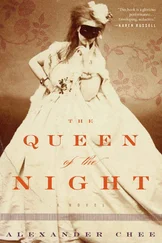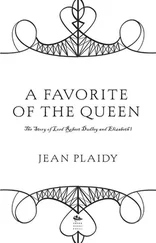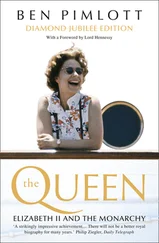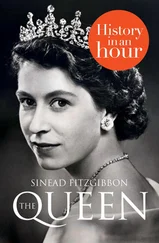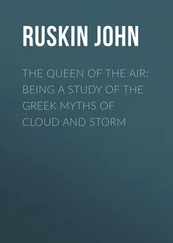None of the criticisms of Philip’s German blood or cheeky attitude was of any concern to Princess Elizabeth. A man of ideas and appealing complexity, he was a breath of fresh air to the heiress presumptive. It was clear he would not be easy, nor would he be boring, as might have been the case with one of her mother’s chosen suitors. He shared her commitment to duty and service, but he also had an irreverence that could help lighten her official burdens at the end of a tiring day. His life had been as unfettered as hers had been structured, and he was unencumbered by the properties and competing responsibilities of a landed British aristocrat. According to their mutual cousin, Patricia Mountbatten, the princess also saw that behind his protective shell, “Philip had a capacity for love which was waiting to be unlocked, and Elizabeth unlocked it.”
The princess “would not have been a difficult person to love,” said Patricia Mountbatten. “She was beautiful, amusing and gay. She was fun to take dancing or go to theater.” In the seven years since their first meeting, Lilibet (which is what Philip now called her, along with “darling”) had indeed become a beauty, her appeal enhanced by being petite. She did not have classical features but rather what Time magazine described as “pin-up” charm: big bosom (taking after her mother), narrow shoulders, a small waist, and shapely legs. Her curly brown hair framed her porcelain complexion, with cheeks that Cecil Beaton described as “sugar pink,” vivid blue eyes, an ample mouth that widened into a dazzling smile, and an infectious laugh. “She sort of expands when she laughs,” said her cousin Margaret Rhodes. “She laughs with her whole face.”
There was nothing daring or even particularly stylish about Elizabeth’s appearance. Until she was well into her teens, she and her sister had dressed alike in childish outfits, primarily to assuage Margaret, who “was always tying to catch up,” explained Anne Glenconner, a good friend of Margaret. Only when Lilibet turned nineteen did she begin choosing clothing for herself, and even then she tended toward the conservative styles and pastel colors favored by her mother, avoiding any hint of décolletage. Crawfie had to badger her into choosing a bold red dinner dress with a pleated skirt and figure-hugging jacket piped in white silk—“one of the most becoming frocks she ever had,” the governess concluded. The princess was intrigued by the process of selecting bespoke clothing from the royal couturier, Norman Hartnell—the sketches, the models, and the fittings. But she had little patience for gazing at herself in mirrors. Vain preening was alien to her nature.
The press caught wind of the cousins’ romance as early as October 1946 at the wedding of Patricia Mountbatten to Lord Brabourne at Romsey Abbey. Philip was an usher, and when the royal family arrived, he escorted them from their car. The princess turned as she removed her fur coat, and the cameras caught them gazing at each other lovingly. “I think people thought ‘Aha!’ at that point,” recalled Patricia Brabourne. But no official confirmation followed, and the couple kept up an active social life. Elizabeth’s guardsmen friends served as her escorts to restaurants and fashionable clubs like The 400, and Philip would take Elizabeth and Margaret out to a party or the theater. But he was only one among many young men to dance with the heiress presumptive.
LILIBET HAD A growing number of official duties in what her father wryly called the “Royal Firm” (later shortened to the “Firm”). In July 1945, her parents took her to Northern Ireland—her first flight on an airplane. Eight months later she returned for her first solo visit to the six predominantly Protestant counties that were created when Ireland was divided by the British government in 1922. Ireland had been a British colony since England’s King Henry II invaded in the twelfth century. After more than eight centuries of oppressive British rule, Irish nationalists rebelled in 1916, resulting in the violent six-year war for independence that led to partition. While the north (also to be known as Ulster) remained within the United Kingdom, the predominantly Catholic twenty-six counties in the south became the self-governing Irish Free State, a British dominion (similar to Canada and Australia) that grudgingly recognized the British monarch as its head of state.
George VI continued to be his daughter’s most important tutor. During long walks at Sandringham, Balmoral, and Windsor Home Park, he gave her advice and shared his views on government and politics.
The King’s popularity was at its peak, but the postwar years proved difficult for him. In the July 1945 election, the Labour Party won control of Parliament. After heroically leading Britain through the war, Winston Churchill, the King’s confidant and valued partner, was replaced at 10 Downing Street by Clement Attlee, the leader of the Labour party. Not only was Attlee taciturn and reserved, his socialist policies—an ambitious Labour platform to create a far-reaching welfare state, nationalize industry, and redistribute wealth—were anathema to both the King and Queen (although Queen Elizabeth shrewdly sized him up as “a practical little man … quite cagey … difficult to get along with, but he soon melted”). The King didn’t hesitate to express his outrage in private, but publicly he remained rigorously neutral. His elder daughter could also see how the strain of his job was wearing her father down. He had begun to suffer from arteriosclerosis, which affected the circulation in his legs and gave him considerable pain. But instead of pacing himself, he kept late hours, chain-smoking as he worked.
On February 1, 1947, King George VI, Queen Elizabeth, Princess Elizabeth, and Princess Margaret embarked on their first official overseas trip together—three months in the British colonies of South Africa and Rhodesia, plus a month for the round-trip ocean voyage on the forty-thousand-ton battleship HMS Vanguard , where the admiral’s quarters had been transformed into a suite of day and sleeping cabins decorated with prints of London scenes, sofas and chairs in cheerful patterns of ivory, blue, and beige, and satinwood furniture. With a household entourage of ten, they left England from Portsmouth on a gray day at a time when Britain was suffering through a winter of record-breaking cold along with food rationing and fuel shortages.
The journey marked Lilibet’s emergence as a major presence in the royal family and introduced her to the distant reaches of British power. The idea of the British Commonwealth began taking shape in the early twentieth century to describe colonies in the empire making the transition to independence but keeping their connection to the crown. What would become the modern Commonwealth in 1949 was still inchoate, but George VI wanted to transmit to the heiress presumptive his devotion to the countries of the formerly robust British Empire. On a personal level, her time away from Philip would be a final test of her commitment and some time for “we four,” the affectionate name King George VI had given to his family, to spend their last stretch of time together.
The first several days shipboard left the entire royal party seasick and confined to their cabins in heavy swells and gales so fierce that the Royal Standard—the sovereign’s red, gold, and blue flag bearing lions passant and rampant as well as a gold harp—was torn to shreds. When the sun came out as they cruised into the tropics, the princesses leaned hatless against the rails in their flowered dresses, lay on the deck of the rifle range to compete in shooting contests, and dashed around playing tag with the boisterous naval officers. The King, in shirtsleeves and shorts displaying spindly legs, played deck tennis with midshipmen while the women watched. When the ship passed the equator, the crew staged a “Crossing the Line” ceremony featuring sailors dressed in wigs, falsies, and skirts, presided over by Father Neptune with his trident. The “novices” crossing for the first time were dunked and otherwise tormented, although the two princesses only had their faces dabbed with outsized powder puffs.
Читать дальше

